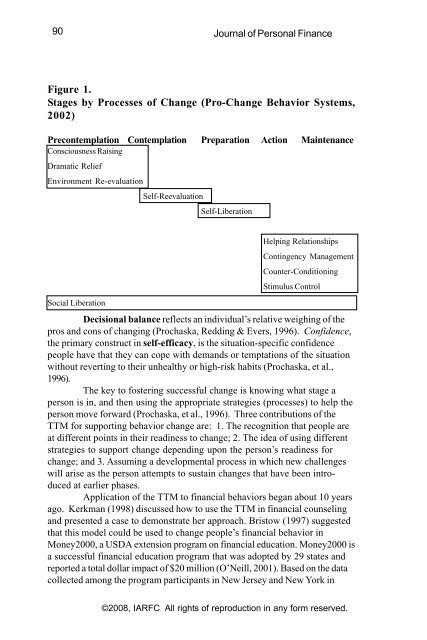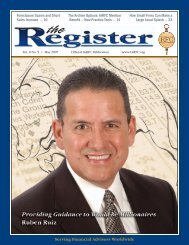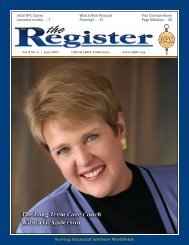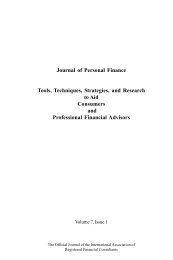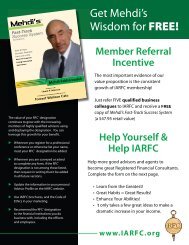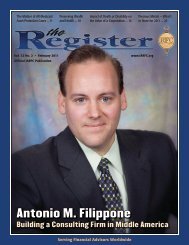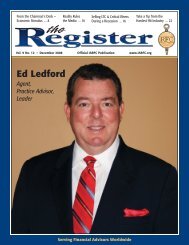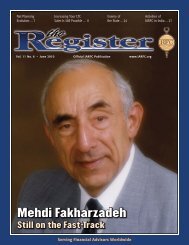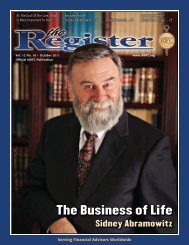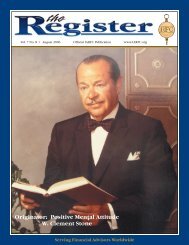3433-vol. 6 issue 2-3.pmd - iarfc
3433-vol. 6 issue 2-3.pmd - iarfc
3433-vol. 6 issue 2-3.pmd - iarfc
Create successful ePaper yourself
Turn your PDF publications into a flip-book with our unique Google optimized e-Paper software.
90<br />
Journal of Personal Finance<br />
Figure 1.<br />
Stages by Processes of Change (Pro-Change Behavior Systems,<br />
2002)<br />
Precontemplation Contemplation Preparation Action Maintenance<br />
Consciousness Raising<br />
Dramatic Relief<br />
Environment Re-evaluation<br />
Self-Reevaluation<br />
Self-Liberation<br />
Social Liberation<br />
Helping Relationships<br />
Contingency Management<br />
Counter-Conditioning<br />
Stimulus Control<br />
Decisional balance reflects an individual’s relative weighing of the<br />
pros and cons of changing (Prochaska, Redding & Evers, 1996). Confidence,<br />
the primary construct in self-efficacy, is the situation-specific confidence<br />
people have that they can cope with demands or temptations of the situation<br />
without reverting to their unhealthy or high-risk habits (Prochaska, et al.,<br />
1996).<br />
The key to fostering successful change is knowing what stage a<br />
person is in, and then using the appropriate strategies (processes) to help the<br />
person move forward (Prochaska, et al., 1996). Three contributions of the<br />
TTM for supporting behavior change are: 1. The recognition that people are<br />
at different points in their readiness to change; 2. The idea of using different<br />
strategies to support change depending upon the person’s readiness for<br />
change; and 3. Assuming a developmental process in which new challenges<br />
will arise as the person attempts to sustain changes that have been introduced<br />
at earlier phases.<br />
Application of the TTM to financial behaviors began about 10 years<br />
ago. Kerkman (1998) discussed how to use the TTM in financial counseling<br />
and presented a case to demonstrate her approach. Bristow (1997) suggested<br />
that this model could be used to change people’s financial behavior in<br />
Money2000, a USDA extension program on financial education. Money2000 is<br />
a successful financial education program that was adopted by 29 states and<br />
reported a total dollar impact of $20 million (O’Neill, 2001). Based on the data<br />
collected among the program participants in New Jersey and New York in<br />
©2008, IARFC All rights of reproduction in any form reserved.


